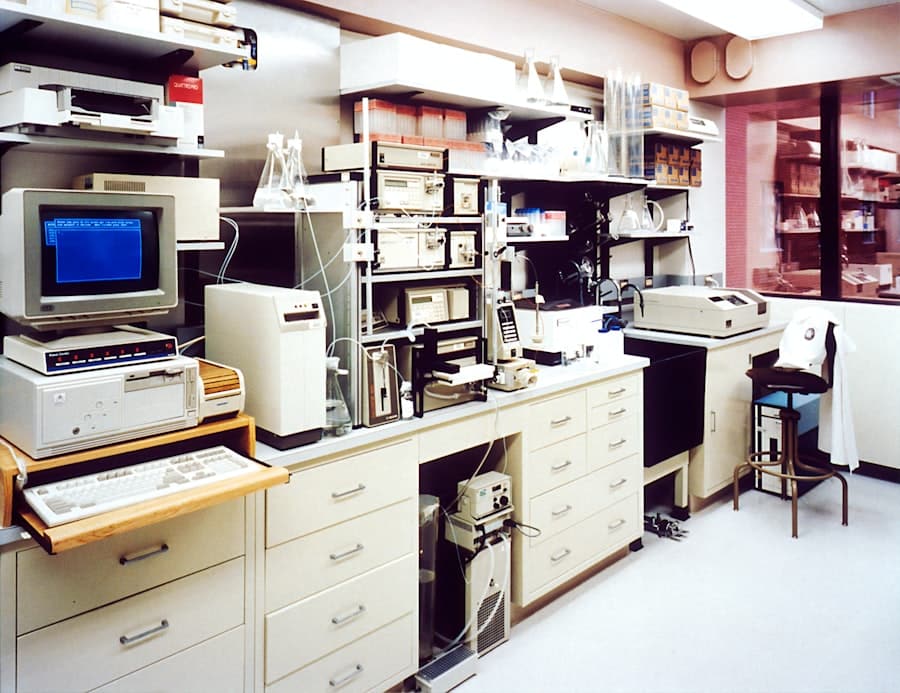The field of robotics is undergoing a transformative evolution, driven by a confluence of emerging technologies that are reshaping how robots are designed, developed, and deployed. As we stand on the brink of a new era, the integration of advanced technologies such as artificial intelligence (AI), machine learning, virtual reality (VR), augmented reality (AR), and the Internet of Things (IoT) is revolutionizing the capabilities of robotic systems. These advancements not only enhance the functionality of robots but also expand their applications across various sectors, including healthcare, manufacturing, logistics, and even entertainment.
The rapid pace of innovation in robotics is fueled by the increasing demand for automation and efficiency in various industries. As businesses seek to optimize operations and reduce costs, the role of robotics becomes increasingly critical. The emergence of sophisticated AI algorithms allows robots to perform complex tasks with greater precision and adaptability.
Furthermore, the integration of connectivity technologies like 5G and IoT enables real-time data exchange and remote control, enhancing the operational capabilities of robotic systems. This article delves into the key advancements in robotics, exploring how these technologies are interwoven to create a new landscape for automation.
Key Takeaways
- Emerging tech in robotics is rapidly evolving and has the potential to revolutionize various industries.
- Advancements in artificial intelligence and machine learning are enhancing the capabilities of robots, making them more autonomous and intelligent.
- The integration of virtual reality and augmented reality in robotics is creating new opportunities for immersive training and enhanced human-robot interaction.
- 5G technology is set to significantly improve the speed, reliability, and connectivity of robots, enabling them to perform more complex tasks in various environments.
- The Internet of Things (IoT) is playing a crucial role in next-gen robotics by enabling seamless communication and data exchange between robots and other connected devices.
Advancements in Artificial Intelligence and Machine Learning
Artificial intelligence and machine learning are at the forefront of the robotics revolution, providing machines with the ability to learn from experience and adapt to new situations. Traditional robotic systems operated on pre-programmed instructions, limiting their flexibility and responsiveness. However, with the advent of AI, robots can now analyze vast amounts of data, recognize patterns, and make decisions based on real-time information.
For instance, in manufacturing environments, AI-powered robots can optimize production lines by predicting equipment failures and adjusting workflows accordingly. Machine learning algorithms enable robots to improve their performance over time through iterative learning processes. A notable example is the use of reinforcement learning in robotic arms that are trained to perform intricate tasks such as assembling components or sorting items.
By simulating various scenarios and receiving feedback on their actions, these robots can refine their techniques to achieve higher efficiency and accuracy. This capability not only enhances productivity but also reduces the need for human intervention in repetitive or hazardous tasks.
Integration of Virtual Reality and Augmented Reality in Robotics

The integration of virtual reality (VR) and augmented reality (AR) into robotics is creating immersive experiences that enhance both training and operational efficiency. VR allows engineers and operators to simulate robotic environments, enabling them to visualize complex tasks before implementation. For example, in surgical robotics, VR can be used to train surgeons in a risk-free environment, allowing them to practice procedures on virtual patients before performing them on real ones.
This not only improves surgical skills but also increases patient safety. On the other hand, AR overlays digital information onto the physical world, providing real-time guidance to operators working alongside robots. In warehouse settings, AR can assist workers by displaying instructions directly onto their field of vision through smart glasses or headsets.
This technology streamlines processes such as picking and packing by guiding employees to the correct items while minimizing errors. The combination of VR and AR with robotics not only enhances training but also improves collaboration between humans and machines, leading to more efficient workflows.
Impact of 5G Technology on Robotics
The rollout of 5G technology is set to revolutionize robotics by providing ultra-reliable low-latency communication (URLLC) that enables real-time data exchange between robots and their control systems. This high-speed connectivity allows for seamless coordination among multiple robotic units operating in dynamic environments.
This level of connectivity enhances safety and efficiency in transportation systems. Moreover, 5G’s capacity to support a massive number of connected devices simultaneously opens up new possibilities for IoT-enabled robotics. In smart factories, for example, robots equipped with 5G connectivity can communicate with sensors and other machines in real-time, allowing for adaptive manufacturing processes that respond to changing demands.
The ability to transmit large volumes of data quickly also enables advanced analytics and machine learning applications, further enhancing the capabilities of robotic systems.
The Role of Internet of Things (IoT) in Next-Gen Robotics
The Internet of Things (IoT) plays a pivotal role in shaping next-generation robotics by enabling devices to connect and communicate over the internet. This interconnectedness allows robots to gather data from various sources, including sensors embedded in their environment or other machines within a network. For instance, in agriculture, IoT-enabled drones can collect data on crop health and soil conditions while communicating with ground-based robots that perform tasks such as planting or harvesting.
This synergy enhances precision agriculture practices and optimizes resource usage. Furthermore, IoT facilitates remote monitoring and control of robotic systems, allowing operators to manage operations from anywhere in the world. In healthcare settings, for example, telepresence robots equipped with IoT capabilities enable doctors to consult with patients remotely while receiving real-time data from medical devices.
This capability not only expands access to healthcare services but also improves patient outcomes by allowing timely interventions based on accurate data analysis.
Utilizing Blockchain Technology for Robotics Development

Blockchain technology is emerging as a powerful tool for enhancing transparency and security in robotics development. By providing a decentralized ledger for recording transactions and interactions between robots and other entities, blockchain can ensure data integrity and traceability throughout the lifecycle of robotic systems. For instance, in supply chain management, blockchain can track the provenance of components used in robotic manufacturing, ensuring that they meet quality standards and regulatory requirements.
Moreover, blockchain can facilitate secure communication between autonomous robots operating in shared environments. In scenarios where multiple robots collaborate on tasks—such as delivery drones navigating urban landscapes—blockchain can provide a secure framework for exchanging information about routes, obstacles, and operational status without the risk of tampering or unauthorized access. This level of security is crucial for building trust in autonomous systems that operate alongside humans.
Robotics and the Future of Quantum Computing
Quantum computing holds immense potential for advancing robotics by enabling complex computations that are currently infeasible with classical computers. The unique properties of quantum bits (qubits) allow for parallel processing at unprecedented scales, which could significantly enhance machine learning algorithms used in robotics. For example, quantum algorithms could optimize pathfinding for autonomous vehicles or improve decision-making processes in dynamic environments where multiple variables must be considered simultaneously.
Additionally, quantum computing could revolutionize simulations used in robotics development. Traditional simulations often require significant computational resources and time; however, quantum computers could model complex physical interactions more efficiently. This capability would accelerate the design and testing phases of robotic systems, allowing engineers to iterate rapidly on prototypes and bring innovative solutions to market faster than ever before.
Ethical and Regulatory Considerations in Next-Gen Robotics
As robotics technology continues to advance at an unprecedented pace, ethical and regulatory considerations become increasingly important. The deployment of autonomous systems raises questions about accountability and liability in cases where robots cause harm or make decisions that impact human lives. For instance, in autonomous vehicles involved in accidents, determining responsibility—whether it lies with the manufacturer, software developer, or vehicle owner—poses significant legal challenges.
Moreover, ethical concerns surrounding privacy and surveillance arise as robots become more integrated into daily life. The use of drones for monitoring public spaces or delivery services raises questions about data collection practices and individual rights. Regulatory frameworks must evolve to address these challenges while fostering innovation in robotics.
Policymakers need to strike a balance between encouraging technological advancement and ensuring public safety and ethical standards are upheld. In conclusion, the intersection of emerging technologies such as AI, machine learning, VR/AR, 5G, IoT, blockchain, quantum computing, and ethical considerations is shaping the future landscape of robotics. As these advancements continue to unfold, they promise to redefine industries and enhance human-robot collaboration while also necessitating careful consideration of their implications on society at large.
In the context of how emerging technology is shaping the future of robotics, it’s interesting to explore the broader implications of tech advancements in various fields. For instance, the article on com/exploring-the-features-of-the-samsung-galaxy-chromebook-2/’>Exploring the Features of the Samsung Galaxy Chromebook 2 delves into the innovative features of modern devices that can enhance productivity and creativity, which are essential for developing next-generation robotic systems.
FAQs
What is next-generation robotics?
Next-generation robotics refers to the latest advancements in robotics technology, including the use of emerging technologies such as artificial intelligence, machine learning, and advanced sensors to create more advanced and capable robots.
How does emerging tech accelerate next-gen robotics?
Emerging technologies such as artificial intelligence, machine learning, and advanced sensors enable next-generation robotics to perform more complex tasks, adapt to changing environments, and interact more effectively with humans.
What are some examples of emerging technologies in next-gen robotics?
Examples of emerging technologies in next-gen robotics include computer vision, natural language processing, deep learning, and advanced materials for building more dexterous and flexible robots.
What are the potential applications of next-gen robotics?
Next-generation robotics has the potential to be used in a wide range of applications, including manufacturing, healthcare, agriculture, logistics, and space exploration, among others.
How will next-gen robotics impact the future of work?
Next-generation robotics is expected to automate repetitive and dangerous tasks, freeing up human workers to focus on more complex and creative tasks. However, it may also lead to job displacement in some industries.

